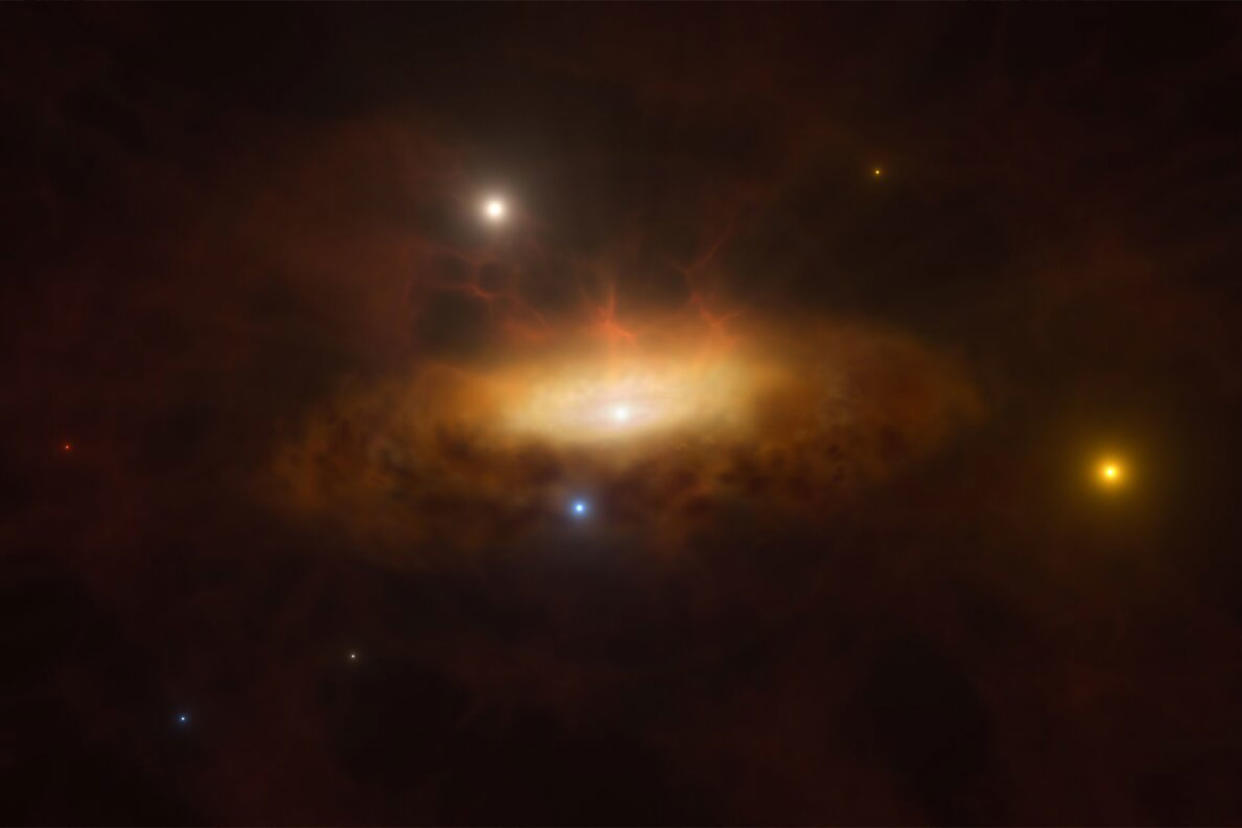A black hole 1 million times our Sun awakened — and astronomers caught the whole thing in real time

We typically think of black holes as monstrous entities that destroy everything. But while they do have incredibly destructive power, they really only rip apart things that get too close. Most galaxies have a supermassive black hole in their center. Ours in the Milky Way is called Sagittarius A*. But scientists caught some never before seen footage of a black hole, as described in a recent study published in the journal Astronomy & Astrophysics.
A galaxy known as SDSS1335+0728 displayed unprecedented activity in late 2019. Specifically, it began to brighten, remaining illuminated for years even though galaxies observed to light up usually do so for weeks at the most.
Using archival data and new observations from several facilities, including the X-shooter instrument on ESO’s VLT in Chile’s Atacama Desert, the scientists behind the study concluded that the galaxy has an active galactic nucleus (AGN). This means that the galaxy has an active supermassive black hole at its core, emitting bright jets and winds to illuminate the celestial feature for Earth-bound astronomers.
“These giant monsters usually are sleeping and not directly visible,” co-author Claudio Ricci from Diego Portales University in Chile said in a statement. “In the case of SDSS1335+0728, we were able to observe the awakening of the massive black hole, [which] suddenly started to feast on gas available in its surroundings, becoming very bright.”
There are other possibilities as to what this might be, including entirely new phenomena never before seen in the universe. Co-author Lorena Hernández García, from MAS and the University of Valparaíso in Chile, said that if the data from this study is correct, “this would be the first time that we see the activation of a massive black hole in real time.”
What's more, the galaxy's core is just getting brighter. While located some 300 million light-years away in the constellation Virgo, it's definitely worth keeping an eye on to see how it behaves in the future.
Galaxies that revolve around an AGN are more volatile than those with inactive black holes at their center. Blazars, for example, are galaxies where the center shoots out jets of ionized matter flying through space almost as fast as the speed of light. Quasars are even more intense, emitting matter so powerful that it can destroy baby stars. Although the origin of these phenomena remains mysterious, a 2023 study in the journal Monthly Notices of the Royal Astronomical Society hypothesized based on recent data that they may be caused by galactic collisions.


